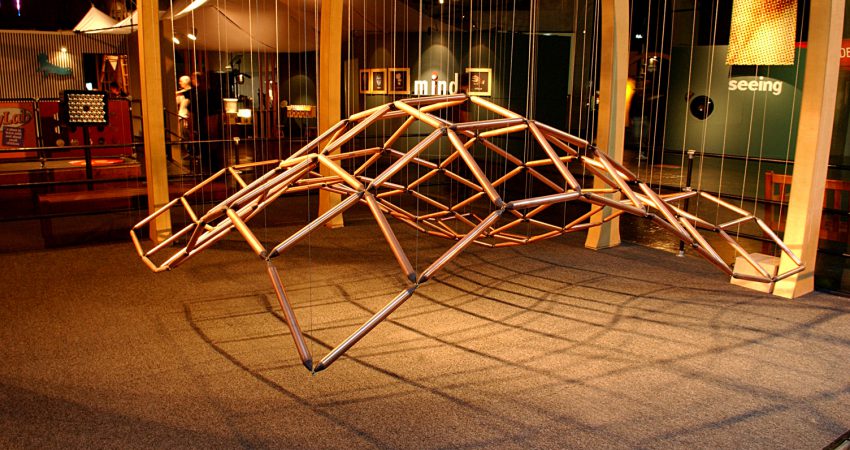
By Kerri Wingert - September 2014
PAPER CITATION
Briseño-Garzón, A. (2013). More than science: Family learning in a Mexican science museum. Cultural Studies of Science Education, 8(2), 307–327. doi:10.1007/s11422-012-9477-0
Research Design
Briseño-Garzón investigated how the values, traditions, and behaviors that constitute social and cultural practices of Mexican families shaped their ways of learning and their learning outcomes in a science museum. She used case study methods to analyze interviews with 20 families after their visit to Universum Museo de las Ciencias in Mexico City to determine how their values influenced their learning.
The researcher coded the interviews and recorded interactions for different types of interactions, including parenting practices, educational outcomes, and perceptions of the museum visit. In these categories, she noted types of social engagement among family members, their engagement with exhibits, and the intellectual (“cognitive”) and socioemotional (“non-cognitive”) benefits of visiting the museum. Briseño-Garzón then considered these outcomes in light of the family’s values, which she surfaced in the interviews.
Findings
Families reported that they had a fun, educational experience that allowed them to learn about one another and spend time together. They also enjoyed the time, reporting that they experienced “collective amusement” in the museum. Parents felt that the museum provided a holistic opportunity for their children to learn and grow. For example, touch tanks elicited strong emotional outcomes, and thus learning, for children.
In addition to these generalized findings, other conclusions were spread across four dimensions: learning in the sociocultural context of Mexico City, learning as a social event, learning about others, and learning about science.
- Learning was integrated into the sociocultural context of the museum. The museum provided opportunities to learn about locally relevant issues, such as the Mexico City earthquakes of 1957 and 1985. Parents were pleased that the museum helped to teach their children about a defining event in the history of both the city and museum visitors. Briseño-Garzón suggests that the museum thus played a unique role in the families’ learning.
- Learning itself was a social process valued by the participants. Parents reflected on the ways that their children were learning with them throughout their visit. For example, parents took opportunities to have their children explain what they were seeing in exhibits or read aloud museum signage, reinforcing reading skills learned in school. Further, many parents expressed how much their children taught them during their visit.
- The museum visit provided opportunities for non-cognitive gains. Parents reported that children expanded their social skills in interactions with other children. They also stated that the time in the museum with their children was important to them: “That is the most valuable thing, I think, the time we share in the same place, without hurries, without worries, and enjoying ourselves” (p. 321). Thus the science museum also helped reinforce strong Mexican sociocultural identities within a critical unit of organization: the family.
- The museum provided for science content learning. Parents and children both reported that they learned science content, including life science, astronomy, nutrition, and archaeology. Adults also made connections to their previous learning in school and reflected on how little they knew about the world.
These conclusions, Briseño-Garzón says, indicate that families valued diverse experiences in the museum, including exhibit content as well as opportunities for interpersonal development.
Implications for Practice
This study documents the multiple ways that families in Mexico learned together while visiting a science museum and how they interpreted different parts of the experience as valuable. The study finds that family accounts of the visits “can be wide, diverse, and idiosyncratic in nature. They range from fun and entertaining anecdotes, to socially learning about each other’s personalities and identities as learners” (p. 325).
The study adds to a growing body of research that documents how families use museums as resources for family activity and parenting. Briseño-Garzón’s work may be of particular interest to informal science educators who are trying to provide holistic learning experiences for families. The interview data remind us that families recognize many aspects of a museum visit as valuable. Although Briseño-Garzón suggests that this diversity of values is typical of Mexican families, Anglo families may also value multiple social and intellectual aspects of a museum visit.
Theoretical Basis
The researcher, drawing in particular on Vygotsky’s (1987) sociocultural theories of learning and von Glaserfeld’s (1992) social constructivist theory, approached her study using a sociocultural lens on learning. She conceptualized learning as a process involving changing modes of participation in social activity, in this case, the range of activities and roles involved in visiting a museum. Thus, she analyzed parents’ post-visit reflections on the roles and activities of the various family members as evidence of their interest and their active intellectual and socioemotional development. Adults’ reflections on children’s choices, actions, and interactions in the museum provided insights into the ways in which parents conceptualize and value learning in museums.
References
von Glaserfeld, E. (1992). Constructivism reconstructed: A reply to Suchting. Science & Education, 1, 379–384.
Vygotsky, L. (1987). The collected works of L. S. Vygotsky. Problems of general psychology, including the volume thinking and speech. (R. W. Rieber & A. S. Carton, Eds.). Berlin, DE: Springer.




